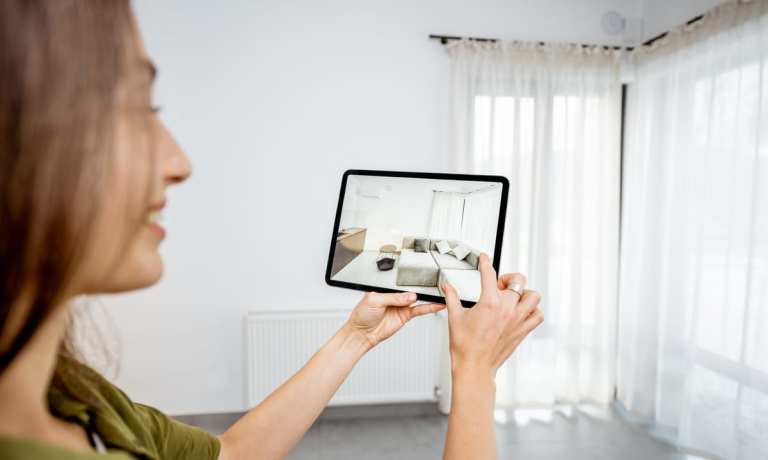
Nothing counters disruption like another disruption. Take weddings, for example. Before the pandemic, the fitting for the bride and bridesmaids was a happy social event at a bridal shop, maybe over a shared bottle of prosecco. Then COVID hit, and now masks and social distancing have made wedding planning an entirely different experience.
David’s Bridal has countered that disruption with another disruption: augmented reality (AR). If the bride and her entourage can’t make it to the store, they can visit the franchise’s website, where the party uses their smartphones to load a 3-D image of a mannequin in a selected wedding or bridesmaid dress. A 360-degree feature enables the bride to take a virtual “tour” of the dress to closely inspect beading, fabric and trains. She can then upload photos and even match her dress to the bridesmaids’ dresses.
The David’s Bridal application was built by Vertebrae, a tech company that specializes in bringing real-world applications to retailing. Vince Cacace, CEO of Vertebrae, told PYMNTS that AR in 3D has become a high-demand technology for all kinds of products and retailers.
“We have customers all across the board who are using AR for everything from auto parts and tires visualization to wedding dresses to hat try-ons,” Cacace said. “The amount of use cases has really expanded, as customers want to be able to answer simple questions when shopping online that aid in the consideration process. Some of those questions are: How big is it? How does it work on me? How does it work in my space? What are the details? How does it work with my things?”
Another example of AR working in a retail application can be seen at the direct-to-consumer (D2C) sunglasses retailer goodr. It started when Founder Stephen Lease was training for a marathon in 2016. All of his gear was functional and well-fitting, with the exception of the metal sunglasses bouncing on the bridge of his nose. It was enough to spark the epiphany that led to him launching his company to sell running sunglasses that fit and looked good.
In early 2018, goodr grew from a small community of runners buying its products to appeal to a larger fanbase. It capitalized on that growth to add new sports, including golf, strength training and biking. The growth spiked traffic and sales, but the company’s conversion rate dropped. Market research showed that goodr needed to upgrade its photography and add virtual try-on, which was the No. 1 requested feature that shoppers said was missing from the website.
Earlier this year, Vertebrae created a virtual 3D try-on application for mobile and online. Early results have shown that mobile customers are 41 percent more likely to convert than those who don’t engage. Online sales have risen by 10 percent for products that are try-on-enabled. Goodr also participated in A/B testing that showed increases in RPV (revenue per visit) from 12 percent – 15 percent in just over a month.
Cacace said AR is helping larger retailers as well, especially in the luxury sector.
“The things that are driving the industry today are those popular, large-volume items coming through big brands and retailers, because they have the most eyeballs on them and have the most financial impact,” he noted. “Then there are the consumers who are willing to buy a higher-consideration, lower-conversion product online. And in some cases, they’re confident enough to buy more expensive versions, because they’ve been able to answer the utility-driven configuration questions. That’s what AR does.”